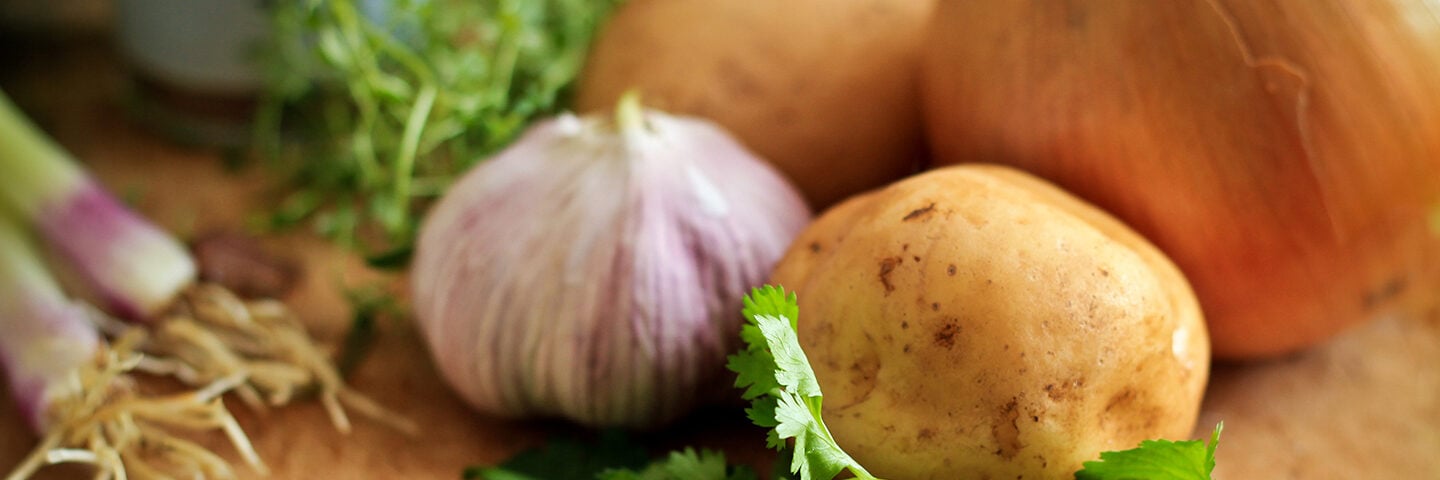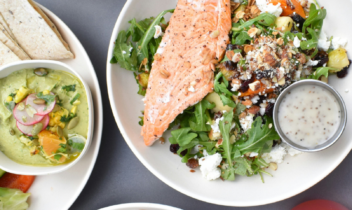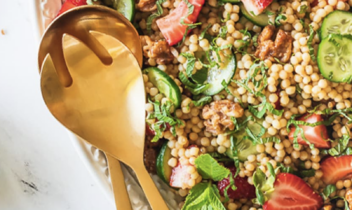
What is the best way to store potatoes, onions and garlic?
Answer
Potatoes
Potatoes are best stored in cool, dark environments. The best temperature is about 45-50 degrees. If you have a cool basement in your home, that will work well. Never store potatoes in your refrigerator; the colder temperature will turn the starch in the potato into sugar, which will affect not only how the potatoes tastes but also how it cooks.
It’s best to store potatoes in dark places because exposure to light can cause “greening” in which the skin of the potatoes turns green. If this happens, cut off the green skin prior to cooking.
If you buy potatoes in bags (versus picking your own from bulk bins in the store), check for bruising or sprouting when you get home. A bruised spot can start to spoil, which can affect other potatoes in the bag. If you must cut off a bruised spot, you will need to either cook that potato right away or store it in your refrigerator for a few hours submerged in water (to avoid discoloration) prior to cooking it.
It’s okay to store potatoes in the bag in which they were purchased as long as the temperature is cool. In warmer temperatures, the potatoes will start to sprout faster. If you don’t have a cooler place to store your potatoes, at the very least you put them in an open container with no lid so air can circulate. A plastic basket with open weaving (something like a small laundry basket) makes a great storage bin for potatoes. Just make sure you place the basket in a dark place, like a closet or pantry.
It’s also important not to wash potatoes prior to storing them. You can wipe them off with a dry cloth or paper towel. But do wash them prior to cutting, peeling, and cooking them!
Never store potatoes with fruit, onions, or garlic. Fresh fruit can give off ethylene gas, a natural substance that causes the fruit to ripen. The ethylene gas will cause the potato to sprout. And while onions and garlic pair well with potatoes from a flavor perspective, storing them together can cause your potatoes to take on the flavors of onions and garlic, which may not be desirable depending on what you’re making with the potatoes.
Onions and Garlic
Onions and garlic are also best stored in cool, dark environments, but it’s also important the storage place is also a dry environment. Both are “cured” prior to being sold in grocery stores. This curing process removes moisture from the outer layer of the skin.
If you buy and use onions and garlic frequently, you can store them on your countertop, but again, don’t store them near or with fresh fruit for the same reason you don’t want to store potatoes near fresh fruit. The ethylene can cause the onions and garlic to sprout.
If your onions or garlic sprout, you can eat the sprouted part. Just be sure to wash it before cutting it. Sprouting will change the texture of the onion or garlic bulb; the flesh may become mushy, in which case you should throw it out after using the sprouted part, which will taste like a green onion.
One final note about onions; pungent onions can be stored longer than sweet onions. The sulfur compounds in pungent varieties of onions that may cause your eyes to water have the benefit of allowing the onions to last longer under good storage conditions. When stored appropriately, pungent onions can be stored for many months. When buying sweet onions, try to use them within 2-3 weeks so they don’t sprout or start to spoil before you enjoy cooking with and eating them.


